I think a fresh turkey tastes best, and there are several options for fresh turkeys on the Island, including Morning Glory Farm, The Larder in Vineyard Haven, Cronig’s Market, and the Farm Institute.
This turkey recipe — the star of Michael Brisson's Thanksgiving Feast — calls for Wild Rice, Spiced Pecan, Apple & Sourdough Bread Stuffing, but you could certainly make it unstuffed and still make the delicious Apple Cider Gravy. Your unstuffed turkey will just cook more quickly, so you’ll want to check on it sooner.
Serves 12
Makes 5 cups gravy
For the gravy:
• 1/4 pound (8 tablespoons) unsalted butter
• 2/3 cup flour, sifted
• 3 cups apple cider
• 1 cup dry white wine
• 1 apple, peeled, cored, and diced
• 2 shallots, chopped (about 4 tablespoons)
• 1 1/2 cups homemade or low-salt canned chicken broth; more as needed
• 2 teaspoons salt
• Freshly ground black pepper
• 1 tablespoon chopped fresh thyme
For the turkey:
• Oil for spraying brown grocery bag
• 12- to 14-lb. fresh turkey (preferably organic), with neck
• Reserved herb butter from Buttercup Squash Soup recipe
• 2 cloves garlic, thinly sliced
• 1 recipe Wild Rice Stuffing
• Kitchen twine for trussing
• 5 tablespoons butter, cut into 10 pieces
• 1/2 cup olive oil
• 2 teaspoons salt
• 1 tablespoon fresh thyme leaves
• 3 cups homemade or low-salt canned chicken broth
• Fresh herbs for garnish
Up to one week ahead:
1. In a medium heavy sauté pan over low heat, melt the butter; add the flour, whisking until smooth. Cook over very low heat for 20 minutes, stirring frequently. The roux should be a pale straw brown; if it begins to darken, remove it from the heat. Refrigerate the roux in a wide-mouthed jar or other covered container.
On the day of serving:
1. Bring the roux to room temperature. Heat the oven to 325°F and adjust the racks to accommodate the roasting pan and an extra pan of stuffing. Cut away one of the wider sides of a brown grocery bag and coat the underside of the remainder with oil, using a spray bottle or pastry brush. Rinse the bird with cold water inside and out. Save the neck and discard the other innards.
2. Cut off the pope’s nose (the tail) from the turkey and tuck the wing tips under the back of the bird. With a rubber spatula or your hands, separate the skin from the breast and spread the herb butter and garlic slices under the skin. Loosely fill the front and back cavities of the bird with stuffing. Insert a long metal fork in the middle of the stuffing in the back cavity (leaving the tip exposed); this will help the stuffing cook faster by drawing the heat to the interior of the stuffing. Cut a slit in the flaps on either side of the cavity. Tie a 16-inch piece of twine around one leg, feed the twine through both slits in the flaps, and pull the twine taut. Wrap the twine around the other leg once, and tie the legs together securely.
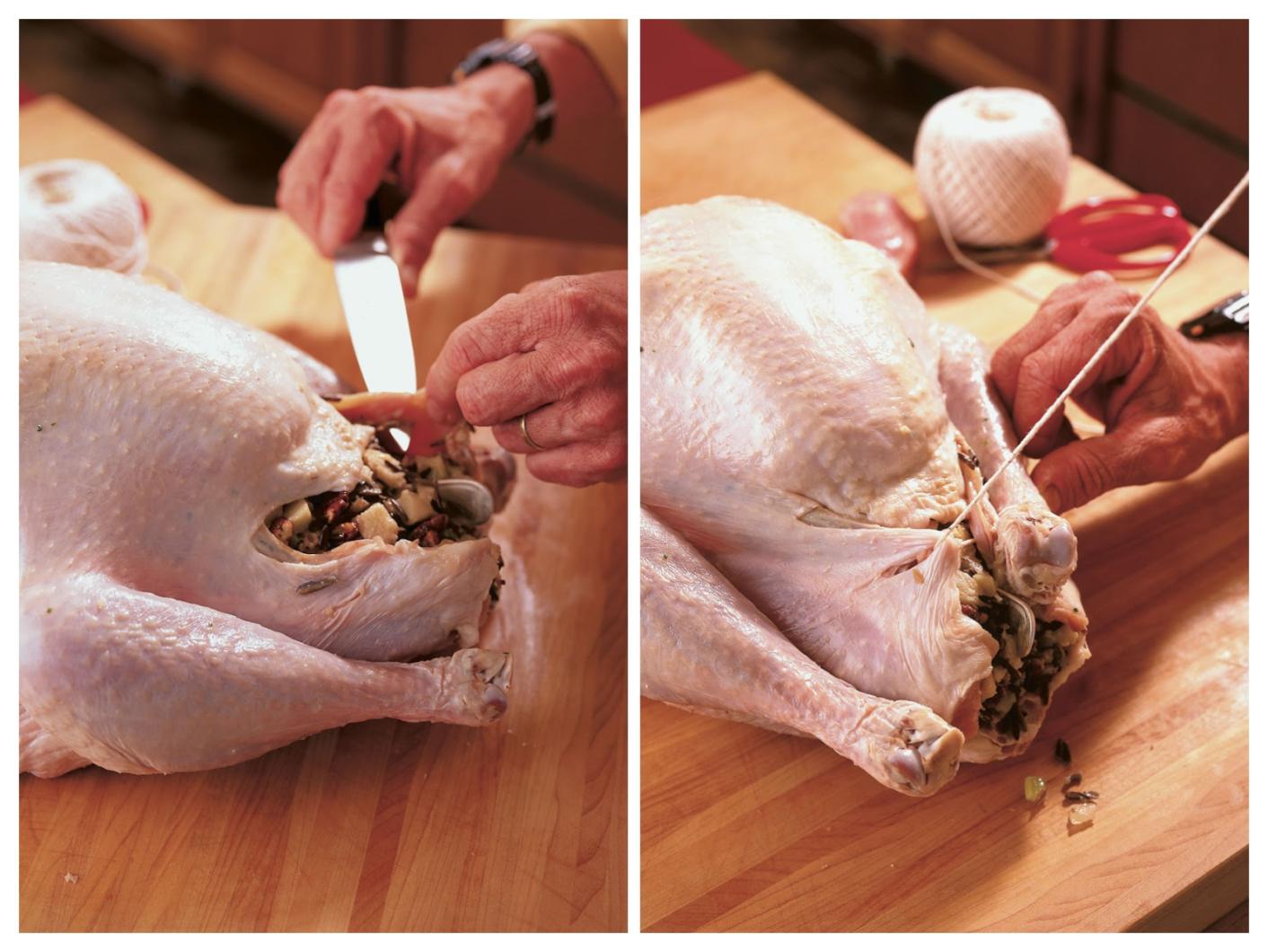
3. Put the extra stuffing in a buttered baking dish, about 9” × 7”. Dot with the 10 dabs of butter and cover with foil. Poke eight holes in the foil for steam and set aside in the refrigerator.
4. Coat the bottom of a large roasting pan with 1/4 cup olive oil — Set the bird in the pan and rub it with the other 1/4 cup oil; sprinkle with 2 teaspoons salt and the thyme leaves. Put the neck in the pan. Cover the bird loosely with the brown bag and put the pan in the oven.
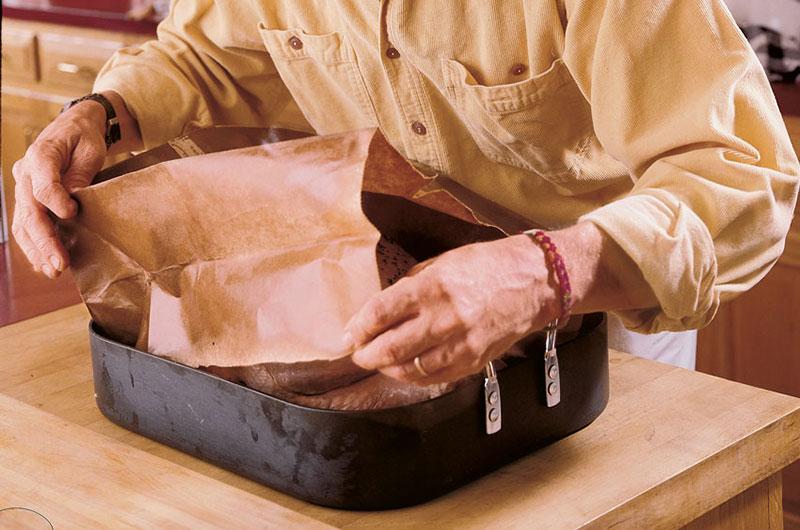
5. After 1 hour of roasting — Remove the neck from the oven; set aside. Begin making a stock for the gravy: In a 2-quart pot, combine the 3 cups cider, the wine, the apple, the shallots, 1 1/2 cups of the chicken broth, and the turkey neck. Boil over high heat until the liquid is reduced by half (to about 2 1/2 cups), about 30 minutes. Discard the turkey neck. Remove the pan from the heat and set aside. Remove the pan of stuffing from the refrigerator to let it come to room temperature for 30 minutes.
6. After 2 1/2 hours of roasting — Put the pan of stuffing into the oven. At the same time, baste the turkey with any juices (there may not be a lot from an organic turkey) and add the 3 cups chicken broth to the pan. Continue roasting for another hour.
8. After 3-1/2 hours of roasting — Remove the paper bag from the turkey. Take the turkey from the oven, set it on a hot pad on the counter, and tilt the pan to pour or ladle off all the juices into a heatproof container (when you tilt the pan, use a towel to hold a leg of the turkey to keep it from sliding). Check the turkey’s temperature (the thickest part of the thigh should be 165°F when done, and the center of the stuffing should be above 160°F.) Return the turkey to the oven to finish roasting if needed. Remove the foil cover from the pan of stuffing.
Let the pan juices sit for at least 10 minutes to allow the fat to rise.
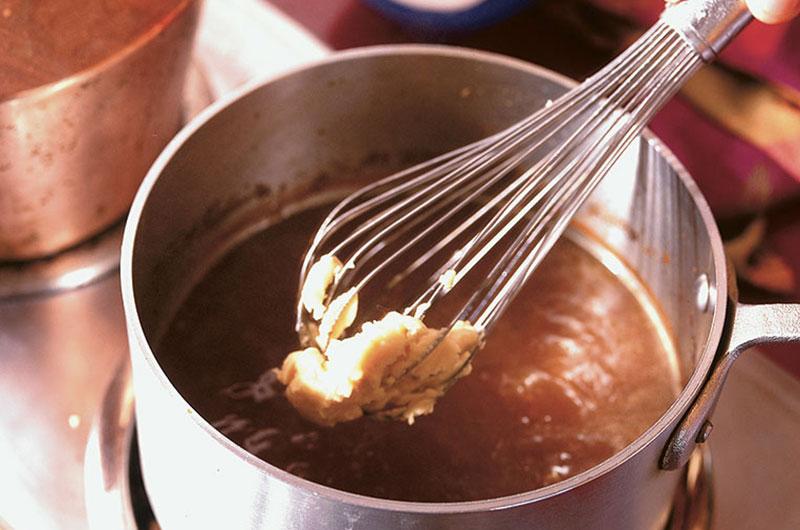
9. Finish the gravy — Skim the fat off the reserved pan juices and add the juices to the reduced cider stock. Bring the liquid to a simmer (skimming off any more fat if necessary) and slowly whisk in about one-third of the roux until it’s absorbed and the gravy thickens. Add more roux if you like a thicker gravy or more stock or apple cider if you want it thinner. Strain the gravy (the apple will have disintegrated), and season with 1 to 2 teaspoons salt and pepper or to taste. Add the thyme and keep the gravy warm (put the pot, loosely covered with foil, on a hot plate if you have one).
10. After 4 hours of roasting — Check the turkey temperature again. Remove the pan of stuffing (it should feel firm). If the turkey isn’t done yet, check in another 30 minutes. When the turkey reaches temperature, remove it from oven and cover loosely with a tent of foil. Let rest at least 20 minutes so the juices settle back into the flesh, which will keep it tender. Or leave the turkey in the oven, turn off the heat, and leave the oven door cracked. You can hold the turkey this way for an hour.
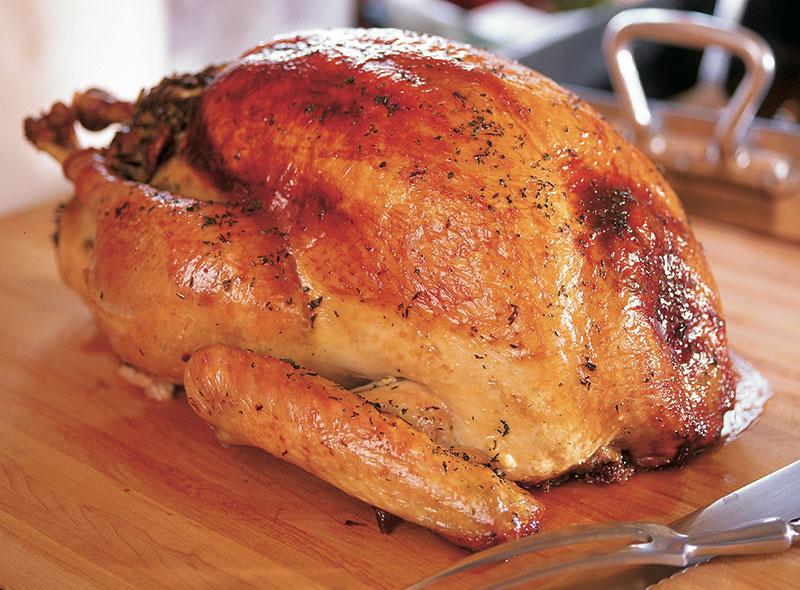
11. Transfer the turkey to a cutting board and slice — I like to remove the legs and the breast and slice the breast meat on a bias and the thigh meat into slices. Arrange on a platter and garnish with fresh herbs.
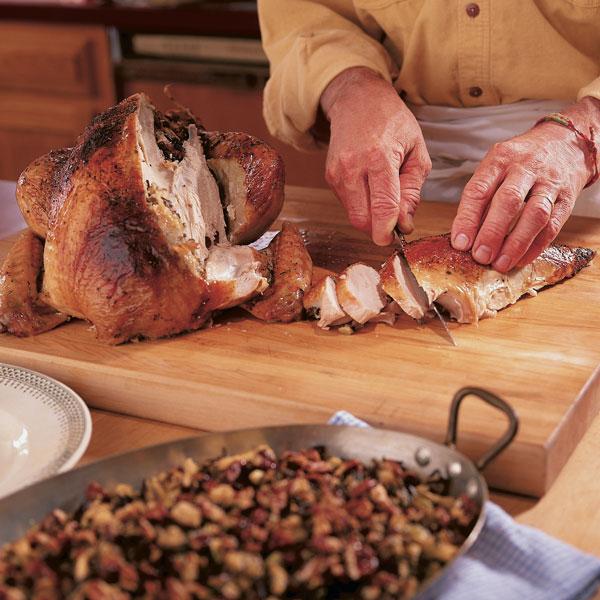

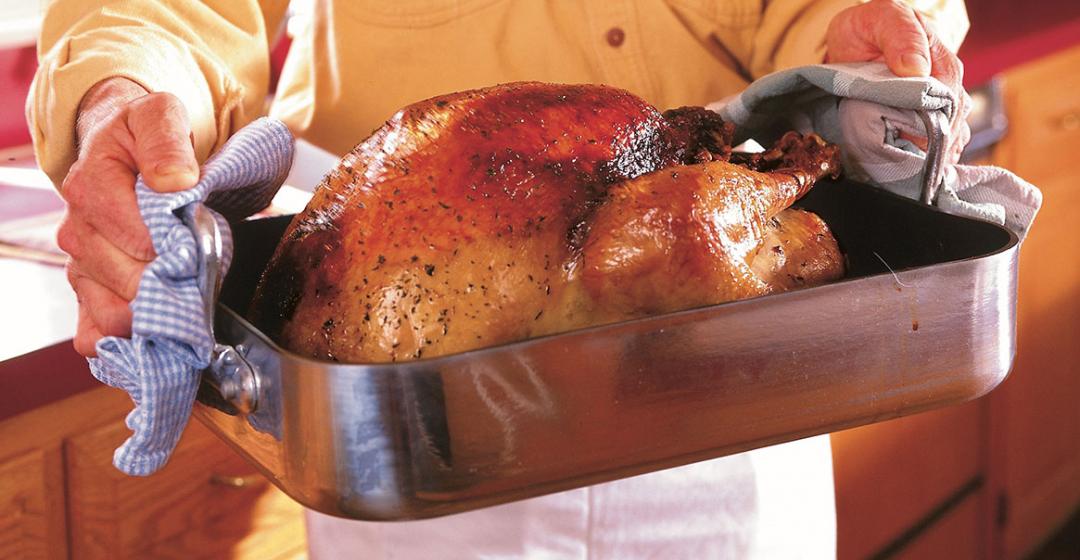


 4 comments
4 comments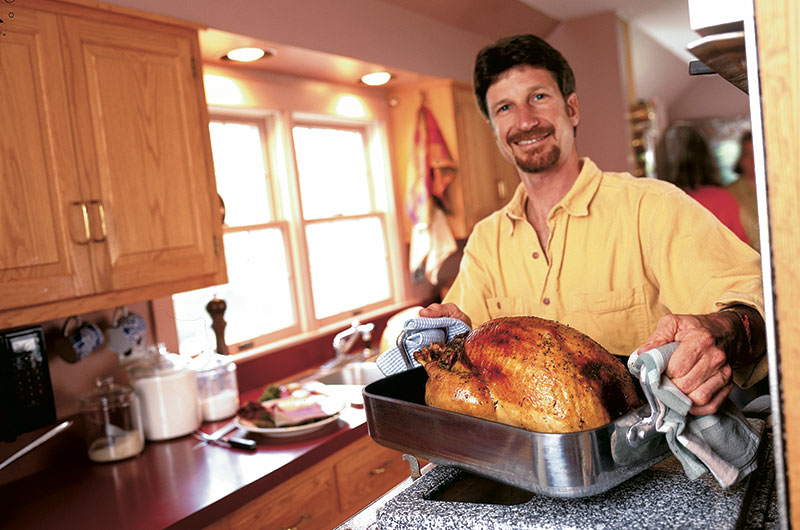



Comments (4)